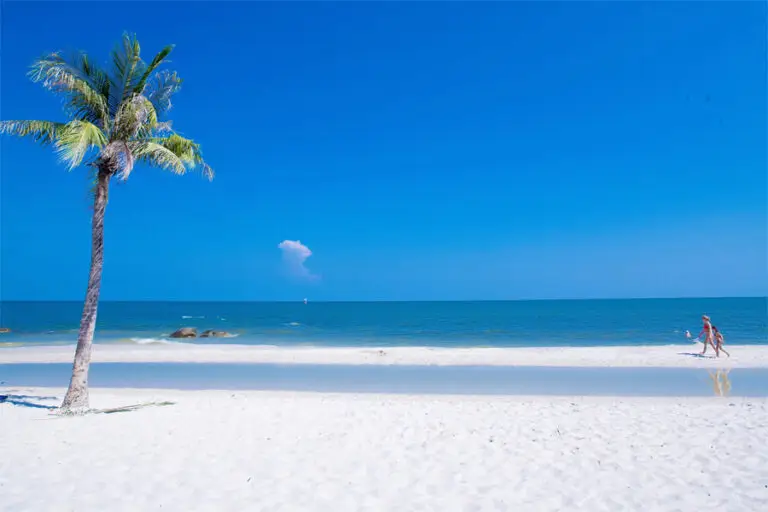PREFER TO WAtch this article as a video ?
Table of Contents
Vietnam: A Jewel of Southeast Asia
Vietnam, nestled in the heart of Southeast Asia, is a multifaceted country. Bordered by giants such as China, Laos, Thailand, and Cambodia, it spans an impressive area of over 330,000 km². Every corner of the country is a living testament to its rich history, vibrant culture, and natural wonders.

1. Halong Bay: A Symphony of Nature and Beauty
Halong Bay, often referred to as the “Descending Dragon Bay,” is more than just a natural wonder; it’s a testament to the artistic prowess of Mother Nature. Stretching over 1,500 km² in the Gulf of Tonkin, this mesmerizing seascape is a labyrinth of limestone pillars and tiny islets that rise dramatically from the emerald waters.
Each island and islet tells a story, shaped over millions of years by wind and water. The bay’s name itself, “Halong,” translates to “where the dragon descends into the sea.” Local legends speak of dragons sent by the gods to protect the Vietnamese from invaders. As the dragons descended, they spat out jewels and jade, which turned into the islands and islets, forming a formidable barrier against the invaders.
Venturing into the bay’s mysterious caves is like stepping into another world. The Sung Sot Cave, also known as the “Surprise Cave,” is a marvel of stalactites and stalagmites, with chambers that seem to go on forever. The Dau Go Cave, with its ancient wooden stakes, whispers tales of historic battles.

The bay is not just about passive admiration; it invites exploration. Kayaking through its calm waters offers a unique perspective, allowing visitors to get up close to the limestone karsts and discover hidden grottoes. For those seeking tranquility, the bay’s floating fishing villages, like Cua Van and Vong Vieng, offer a glimpse into the traditional way of life, where the rhythm of the tides dictates the daily routine.
Halong Bay’s UNESCO World Heritage status is not just a badge of honor; it’s a commitment to preserving this natural masterpiece for generations to come. Every sunrise that paints the bay in hues of gold and every sunset that bathes it in shades of purple is a reminder of the ephemeral beauty of nature and the timeless allure of Halong Bay.
2. The Northern Mountainous Region: A Tapestry of Culture and Nature
Nestled amidst the clouds, the northern highlands of Vietnam are a world unto themselves. This region, with its undulating terrains and ethereal beauty, is a haven for trekkers and nature enthusiasts alike. The landscapes here are a harmonious blend of nature’s grandeur and human perseverance, where centuries-old traditions meet the ruggedness of the mountains.
Sapa, often referred to as the “Gateway to the Highlands,” is more than just a picturesque town. It’s a melting pot of diverse ethnic cultures, each with its unique traditions, crafts, and festivals. The vibrant local markets, where the indigenous tribes like the H’mong, Dao, and Tay come to trade, are a riot of colors and offer a deep dive into the region’s rich cultural tapestry.

The trekking trails in Sapa are not just about physical exploration but also a journey through time. As you meander through the Cat Cat and Lao Chai valleys, you’ll encounter ancient stone carvings, waterfalls, and traditional stilt houses. The terraced rice fields, meticulously carved into the mountainsides, shimmer in varying shades of green and gold, reflecting the changing seasons. These terraces, a testament to the agricultural ingenuity of the locals, create a mesmerizing pattern that looks like nature’s own artwork.
Mount Phan Si Pan, often called the “Roof of Indochina,” stands tall at 3,147.3 meters. The journey to its summit is not for the faint-hearted but promises rewards that are truly unparalleled. As you ascend, the flora and fauna transform, offering a glimpse into the region’s biodiversity. The view from the top, with the sea of clouds beneath and the vast expanse of the highlands stretching to the horizon, is a sight to behold.
But beyond the scenic beauty, it’s the warmth of the people that leaves an indelible mark on every traveler. Their stories, songs, and dances, passed down through generations, resonate with the spirit of the mountains, making the northern mountainous region of Vietnam not just a trekker’s paradise but also a soulful journey into the heart of an ancient land.
3. The Mekong Delta: A Symphony of Water and Culture
The Mekong Delta, often referred to as the “Rice Bowl” of Vietnam, is a mesmerizing labyrinth of waterways, swamps, and islands. It’s a place where life is inextricably tied to the river, and every bend and curve of the water tells a story of tradition, resilience, and harmony.
As you journey through the delta, the rhythmic pulse of the Mekong becomes evident. The floating markets are the region’s heartbeat, bustling with activity from the break of dawn. Can Tho, the largest of these markets, is a sensory delight. The aroma of freshly cooked street food mingles with the scent of tropical fruits like durian, rambutan, and mangosteen. Traders, on their wooden boats, call out their wares, while others exchange goods in a seamless barter system that has been in place for centuries.
But the Mekong Delta is not just about commerce; it’s a living tapestry of culture and tradition. The stilt houses, perched precariously over the water, are a testament to the adaptability of the delta’s inhabitants. As you meander through the narrow canals, you might chance upon a traditional music performance or a local festival, where the community comes together to celebrate their shared heritage.

The landscape of the delta is as diverse as its culture. The verdant rice fields stretch out like a sea of green, shimmering under the tropical sun. These fields, fed by the nutrient-rich waters of the Mekong, produce a significant portion of Vietnam’s rice. Interspersed among the fields are the mangrove forests, vital ecosystems that support a rich biodiversity and act as natural buffers against coastal erosion.
The villages that dot the banks of the Mekong are a window into the soul of the delta. Here, life moves at a leisurely pace, in tune with the rhythms of the river. The locals, with their warm smiles and infectious hospitality, are always eager to share stories of their ancestors, legends of the river, and the secrets of their age-old crafts.
In essence, the Mekong Delta is more than just a geographical region; it’s a mosaic of life, culture, and nature. Every ripple in the water, every songbird’s call, and every sunset over the horizon is a reminder of the timeless bond between the land and its people. It’s a place where life doesn’t just flow; it dances, sings, and celebrates.
4. Da Lat: A Blossoming Highland Retreat
Nestled amidst the Lang Biang Plateau, Da Lat stands as a testament to nature’s artistry and human ingenuity. Often dubbed the “City of Eternal Spring,” its temperate climate provides a refreshing contrast to the tropical heat of Vietnam, making it a favored destination for both locals and tourists alike.
As you wander through the city, the remnants of its colonial past are evident. The elegant French-era villas, with their sloping roofs and whitewashed walls, transport you to a bygone era. These architectural gems are interspersed with modern Vietnamese homes, creating a harmonious blend of the old and the new.
But Da Lat’s true essence lies in its natural wonders. The city is a horticulturist’s dream. The vibrant flower gardens, such as the Da Lat Flower Park, burst with color all year round, showcasing a myriad of blooms from chrysanthemums to orchids. The annual Flower Festival is a spectacle to behold, drawing enthusiasts from all corners of the globe.
Beyond the gardens, the city’s landscape is dotted with pristine lakes. The serene waters of Xuan Huong Lake, set against a backdrop of rolling hills, offer a tranquil setting for boat rides or leisurely strolls along its banks. The Tuyen Lam Lake, with its pine forests and sacred pagodas, is another haven for nature lovers.

Da Lat’s allure doesn’t end with its lakes and gardens. The region is home to some of Vietnam’s most spectacular waterfalls. The Datanla and Prenn waterfalls, with their cascading waters and lush surroundings, provide thrilling adventures for those keen on canyoning or simply seeking a picturesque picnic spot.
The city’s rich history is also reflected in its landmarks. The Da Lat Railway Station, reminiscent of Deauville’s station in France, stands as an architectural marvel. With its unique cog railway and art deco design, it’s not just a transportation hub but a symbol of Da Lat’s blend of cultures.
Local markets, like the Da Lat Market, pulse with activity. Here, you can find everything from handcrafted souvenirs to the region’s famed produce, including strawberries, avocados, and the locally-grown Arabica coffee.
In essence, Da Lat is more than just a city; it’s an experience. Whether you’re exploring its historic streets, reveling in its natural beauty, or immersing yourself in its vibrant culture, Da Lat promises memories that will linger long after the journey ends.
5. The Central Coastline: Vietnam’s Sun-Kissed Oasis
Stretching along the heart of Vietnam’s extensive coastline, the central region is a sun-drenched paradise that beckons beach lovers and sun-seekers from around the world. With a harmonious blend of pristine shores, azure waters, and cultural richness, the central beaches are a testament to Vietnam’s diverse coastal allure.
Da Nang, often hailed as the “Miami of Vietnam,” boasts some of the country’s most iconic beaches. My Khe Beach, with its soft white sands and gentle waves, is a favorite among both locals and tourists. As the sun sets, the beachfront transforms into a vibrant promenade, with beachside cafes and eateries offering a taste of the region’s culinary delights.
Further south, Nha Trang, the “Riviera of the South China Sea,” is renowned for its crescent-shaped bay, fringed by a long stretch of golden sand. The clear turquoise waters here are perfect for snorkeling and diving, revealing a mesmerizing underwater world of coral reefs and marine life. The Vinpearl Cable Car, connecting the city to the nearby Vinpearl Island, offers panoramic views of the bay and is a must-experience attraction.

Beyond the popular hubs, the central coastline is dotted with hidden gems. Lang Co Beach, nestled between a lagoon and the sea, is a serene escape with its palm-fringed shores and tranquil ambiance. The nearby Hai Van Pass offers breathtaking views of the coastline, making it a favorite spot for photographers and nature enthusiasts.
The luxury resorts and boutique hotels that pepper these beaches elevate the coastal experience. From infinity pools overlooking the ocean to spa treatments with sea views, these establishments offer a blend of luxury and nature. Traditional Vietnamese architecture, combined with modern amenities, ensures that guests experience the best of both worlds.
Cultural enthusiasts will also find plenty to explore. The ancient town of Hoi An, a UNESCO World Heritage site, is just a stone’s throw away from some of the region’s best beaches. With its lantern-lit streets, historic architecture, and bustling markets, it offers a glimpse into Vietnam’s rich heritage.
In essence, the central beaches of Vietnam are not just about sun and sand. They are a harmonious blend of natural beauty, luxury, and culture. Whether you’re lounging on the beach, exploring underwater wonders, or soaking in the region’s history, the central coastline promises an experience that is both rejuvenating and enriching.
Conclusion
Vietnam, with its rich blend of landscapes, culture, and history, offers a myriad of experiences that captivate the soul. From the ethereal beauty of Halong Bay to the rugged terrains of the northern mountains, from the pulsating life along the Mekong Delta to the serene beaches of the central coast, the country is a mosaic of contrasts and harmonies.
Each region, with its distinct charm, tells a story of Vietnam’s past, present, and the promise of the future. The bustling markets of Da Lat, the timeless allure of Hoi An, and the modern luxury of the central beaches encapsulate the essence of a nation that is both deeply rooted in its traditions and rapidly embracing the new.
For travelers, Vietnam is not just a destination; it’s a journey of discovery, wonder, and profound appreciation. Whether you’re an adventurer, a history buff, or a beach lover, Vietnam’s diverse landscapes promise memories that linger long after the journey ends.
For more travel tips on Vietnam, you can consult our Guide to Vietnam Airports, Guide to honeymoon destinations in Vietnam, or Guide to the top 10 cities in Vietnam.









